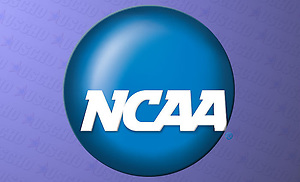 The process that selects at-large teams for the Division I men’s NCAA tournament is undergoing a big shakeup, with wins on the road and against the nation’s better teams getting extra emphasis.
The process that selects at-large teams for the Division I men’s NCAA tournament is undergoing a big shakeup, with wins on the road and against the nation’s better teams getting extra emphasis.
The changes to the NCAA formula, which USCHO represents with the PairWise Rankings, were rolled out on Friday after months of discussions by the Division I Men’s Ice Hockey Committee. (See the NCAA’s full explanation here.)
They also involve the elimination of the teams under consideration criterion that limited the number of teams that were compared against each other.
Those actions reflect what the committee heard from coaches at their annual meeting in Florida in April, said incoming chair Jim Knowlton, the athletic director at Rensselaer.
“Their voice was pretty loud on the fact that they would like to see the committee look at both the home-and-away piece and then also the teams under consideration piece,” said Knowlton, who took over as committee chair at the start of September. “Both of those had the potential to have an impact on the selection criteria, and so that’s what the committee since Naples in April has looked at. What you saw come out of the NCAA was what the committee thought made the most sense for college hockey.”
Some coaches apparently were in the dark about the move as late as Thursday, and they made their schedules for this season not knowing for sure there would be more weight placed on road wins than on home wins.
Outgoing committee chair Tom Nevala, the senior associate athletic director at Notre Dame, said in May that the committee had to be careful on criteria changes because of uncertainty on how the new conference structures in place this season would impact the math.
But Knowlton said the committee studied a number of scenarios before deciding on changes and added that the new look for the selection criteria has been discussed for years.
“It’s something like most things that committees decide on: It’s not going to please everybody,” Knowlton said. “I think if you keep in mind what’s best for college hockey, usually you won’t go wrong. I know that it was a long discussion at the coaches meetings, so I know everyone at least was engaged with it.”
The changes are being made to the Ratings Percentage Index, one of the scores on which teams are compared in the PairWise. (See last season’s PairWise explanation here.)
Wins on the road and losses at home will be counted at 120 percent of their RPI value. Wins at home and losses on the road are worth 80 percent.
In addition, the NCAA is reinstituting a quality wins bonus but giving it a different look from when it was used from 2003 to 2007.
Back then, the bonus points were given for nonconference wins over teams in the top 15 of the RPI. Now, teams get points for wins against teams in the top 20 of the RPI on a sliding scale — five points for a win over the team ranked first, 4.75 for beating No. 2 and all the way to 0.25 for downing No. 20.
Those bonuses are also weighted for location, again at 120 percent for a road win, 100 percent for a neutral-site win and 80 percent for a home win.
The QWB, as the NCAA is calling it, is added to a team’s RPI after it is divided by the weighted number of games.
Some in the committee wanted a heavier weighting scale to be used, Knowlton said.
“We really wanted not to make this a drastic change,” he said. “We wanted to look at this, see what made sense. If we were going to err, we were going to err on the side of more conservative, see how this affected selection and then have a chance to go back to the coaching body and say, ‘OK, what did you think? Let’s get some feedback.'”
As those elements of the PairWise change, one is going away altogether.
Nevala said in June that the committee wanted to reduce the variability in which teams qualified as a team under consideration to make it more cut-and-dried which were in the mix.
It did so by eliminating the criterion that compared teams records to others in the group of teams under consideration, most recently those at .500 or better in the RPI.
Now, all 59 Division I schools will be compared against every other team using three criteria: RPI (including the quality wins bonus), head-to-head record and record against common opponents.
There was no indication the requirement that a team had to have a winning percentage of .500 or better has changed.
Putting more emphasis on road success may be the committee’s way of encouraging schools to reduce the disparity of home games played by teams from different conferences.
With a 20-game conference schedule, the six Big Ten schools have at least 14 nonconference games to schedule. This season, those games are taking place in Big Ten buildings more often than not.
Big Ten schools average nine home nonconference games this season and four on the road.
Compare that to the 12 Atlantic Hockey schools, who have a 27-game schedule and are averaging 1.75 nonconference home games per team and four on the road.
Encouraging big-name schools to play more road games may be an “unintended consequence,” Knowlton said.
“It may be something that happens as a result of this, but I think it really is all about rewarding teams that are on the road for a road win, which we all know is harder than a home win. That may be a second- or third-order effect, which is fine. But that’s I don’t think what the intent of the committee was.”
Regardless of the intent, Rochester Institute of Technology coach Wayne Wilson said it’s what needs to happen.
Wilson pointed to the disparity earlier this summer when talking about a push from some for on-campus regional games for the NCAA tournament.
Friday, he said the big schools’ ratio of home games to road games doesn’t need to be 1-to-1 but better than it is now.
“They do bring a lot of attention, whether it be Big Ten teams or whatever, to college hockey,” Wilson said. “They’re our driving force. RIT’s not going to be able to drive it, along with some of the smaller schools. But I think in all fairness, they do have to go on the road more than what they have in the past. And I think that just betters college hockey in general.”
Wilson, however, has a home game against Michigan on the schedule this season, and his team might not get as much out of a win in that game this year as it would have last year.
“I think we’ll play this and we’ll maybe find other holes in it,” Wilson said. “Or maybe we won’t — I hope we don’t.”
The changes were made by a committee that is fairly diverse when it comes to how the schools they represent will be impacted by the new criteria.
Knowlton’s Rensselaer team plays four of its 12 nonconference games at home, with five on the road and three at neutral sites. Army coach Brian Riley (1 home, 3 road) and Michigan Tech coach Mel Pearson (2 home, 6 road, 2 neutral) also have more road games than home games.
Minnesota associate athletic director Tom McGinnis (10 home, 4 road, 2 neutral), North Dakota AD Brian Faison (7 home, 3 road) and Vermont coach Kevin Sneddon (7 home, 4 road, 1 neutral) come from schools that play more home games than road games.
“I was very proud of the committee because they were really looking at what is best for college hockey,” Knowlton said. “I’m sure in the back of everyone’s mind — ‘How does this affect our league? How does this affect our school?’ — that may go through their mind. But really, this was about what’s the best thing for college hockey, for those 16 teams that we want to see in the NCAA tournament.”


